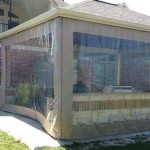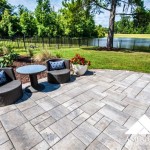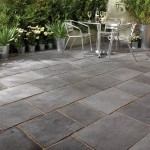How To Make Cement Mix For A Durable Patio
Creating a durable and aesthetically pleasing patio often begins with understanding how to properly prepare a cement mix. A well-mixed batch ensures a stable foundation, preventing cracking, crumbling, and other forms of degradation over time. This article details the necessary steps and considerations for creating a high-quality cement mix suitable for patio construction.
Understanding the Components of Cement Mix
Cement mix, also frequently called concrete mix when aggregate is included, fundamentally comprises several key components, each playing a vital role in the final product's strength and workability. Understanding these components is crucial for achieving a mix that is both easy to work with during construction and durable once cured.
Cement: Cement acts as the binding agent, holding the other materials together. Portland cement is the most common type used in construction due to its strength, durability, and readily available nature. Different types of Portland cement exist, each suited for specific applications. For general patio construction, Type I Portland cement is typically sufficient. However, in environments prone to sulfate exposure or requiring faster setting times, other types might be more appropriate.
Aggregate: Aggregate consists of materials like sand, gravel, and crushed stone. It constitutes the bulk of the mix and provides essential structural support. Aggregate size and type significantly influence the concrete's strength, workability, and appearance. Using a well-graded aggregate, meaning a mixture of different sizes, helps to minimize voids and create a denser, stronger concrete.
Water: Water is essential for hydrating the cement, initiating the chemical reaction that binds the components together. The amount of water used significantly affects the concrete's strength and workability. Too much water leads to a weaker mix, while too little makes the mix difficult to work with. Potable water, free from contaminants that could interfere with the hydration process, is essential.
Admixtures (Optional): Admixtures are chemical compounds added to the mix to modify its properties. These can include air-entraining agents to improve freeze-thaw resistance, water reducers to increase workability without adding excess water, accelerators to speed up setting time, and retarders to slow it down. The selection of admixtures depends on the specific requirements of the project and the environmental conditions.
Determining the Correct Mix Ratio
The proportions of cement, aggregate, and water are critical for achieving the desired strength and durability of the patio. The ideal ratio depends on the specific application, but a common mix ratio for patio construction is 1 part cement, 2 parts sand, and 3 parts gravel. This is often referred to as a 1:2:3 mix. The water-cement ratio, which is the ratio of water to cement by weight, is also crucial. A water-cement ratio between 0.45 and 0.55 is generally recommended for patio construction. Some ready to use bagged mixes may have different ratios stated clearly on the bags, which should be followed.
To calculate the required quantities, first determine the volume of concrete needed for the patio. This involves calculating the area of the patio and multiplying it by the desired thickness. Once the total volume is known, the proportions of each component can be calculated based on the chosen mix ratio. For example, if 1 cubic foot of concrete is needed and the ratio is 1:2:3, then approximately 1/6 cubic foot of cement, 2/6 (or 1/3) cubic foot of sand, and 3/6 (or 1/2) cubic foot of gravel will be required. The water content will need to be adjusted to achieve the desired consistency.
Trial mixes are recommended to fine-tune the water content and workability of the mix. Start with a small batch and gradually add water until the desired consistency is achieved. The mix should be workable but not too soupy. A slump test can be performed to assess the consistency of the mix. This involves filling a cone-shaped mold with concrete and then removing the mold. The amount the concrete slumps, or drops, indicates its consistency.
It's important to account for waste when calculating the required quantities. It's generally advisable to add an extra 5-10% to the total amount to account for spillage and other losses during mixing and placement.
The Mixing Process: By Hand or Machine
The mixing process involves thoroughly combining the cement, aggregate, and water to create a homogenous mixture. This can be done either by hand or using a concrete mixer. The choice depends on the size of the project and the availability of equipment.
Mixing by Hand: Hand mixing is suitable for smaller projects, such as patching or repairing small areas. It requires a shovel, a wheelbarrow or mixing tub, and the components of the mix. First, thoroughly mix the cement and aggregate together in a dry state. Add water gradually, mixing continuously until the desired consistency is achieved. Ensure that all the ingredients are evenly distributed and that there are no dry clumps of cement. This method is labor-intensive and requires careful attention to ensure a consistent mix.
Mixing with a Concrete Mixer: A concrete mixer is a rotating drum that mechanically mixes the ingredients. This method is more efficient and produces a more consistent mix, especially for larger projects. To use a concrete mixer, first add a portion of the water to the drum, followed by the aggregate and then the cement. Then add the remaining water gradually until the desired consistency is achieved. Allow the mixer to run for several minutes to ensure thorough mixing. Avoid overfilling the mixer, as this can reduce its mixing efficiency.
Regardless of the method used, it’s vital to ensure that the mixing area is clean and free from contaminants. Wear appropriate safety gear, including gloves, eye protection, and a dust mask, to protect against exposure to cement dust and other irritants.
The color of the mix can serve as an indicator of a properly mixed batch. A uniform gray color typically signifies a well-mixed concrete. Streaks or variations in color may suggest incomplete mixing and require further blending.
Properly mixed concrete should have a plastic, workable consistency. It should be able to hold its shape when placed but should not be too stiff or crumbly. The consistency should be appropriate for the specific application, whether it's pouring a slab or setting posts.
Once the mixing is complete, the concrete should be used promptly. Concrete begins to set shortly after mixing, so it's important to place and finish it before it becomes too stiff to work with. This time frame depends on several factors, including the type of cement used, the temperature, and the humidity. Generally, concrete should be placed within 1.5 to 2 hours of mixing.
Different types of aggregates affect the mix's final appearance. Using decorative aggregates, such as colored stones or glass, can enhance the patio's aesthetic appeal. Experimenting with different aggregates and colors can create a unique and personalized patio design.
Weather conditions can significantly impact the setting and curing of concrete. In hot weather, concrete can dry out too quickly, leading to cracking. In cold weather, the hydration process can slow down, leading to a weaker concrete. Taking appropriate measures to protect the concrete from extreme temperatures and moisture loss is crucial for ensuring its long-term durability. This may involve covering the concrete with plastic sheeting, spraying it with water, or using insulated blankets.

Types Of Concrete Mix For Any Project The Home Depot

How To Mix Mortar For Patio Laying Bradstone

Quikrete Building A Concrete Patio

Simplest Way To Mix And Pour A Concrete Slab

Diy Concrete Patio In 8 Easy Steps How To Pour A Cement Slab

Paving Slabs Repointing Guide Patio Dry Mix Cement Pointing Jointing Gap Fill Between Flags How To

How To Mix Cement 11 Steps With Pictures Wikihow

How To Repoint Paving Slabs

Quikrete Building A Concrete Patio
Mixing Concrete For A 15 Foot Square Slab Jlc
Related Posts








